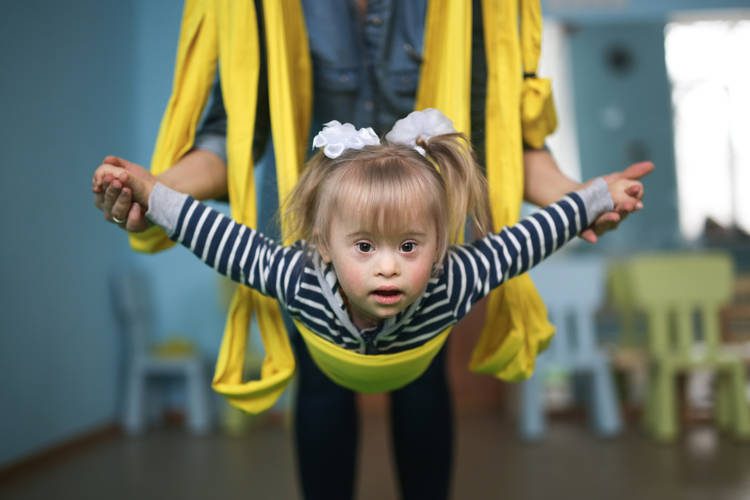Michele Mapes, Center for Community Resources, Butler, Pennsylvania
Shawna Mitcheltree, Center for Community Resources and Alliance for Nonprofit Resources, Butler, Pennsylvania
Abstract
Families are diverse, and so are children’s needs. For children in the child welfare system, there are many layers of regulations that serve to protect the family and child. These regulations can be challenging to navigate when a child is referred to early intervention services. The authors describe how their coordination team collaborated with internal departments and external entities to identify barriers and put processes into place that would lead to effective, efficient, and ethical coordination of services for children and families referred for early intervention services by the Office of Children and Youth Services.
Connecting people to services is the primary mission of Center for Community Resources (CCR). For CCR’s Early Intervention (EI) Department, that means connecting all people in need—including the youngest members of the community and their extended families—to services. That is why, when CCR’s EI service coordination unit of Butler County, Pennsylvania, discovered that several of the referrals from Children and Youth Services (CYS) failed to result in a successful introduction to services, the team decided to take a closer look at how outcomes could be improved to better serve the most vulnerable young children in the community.
Families are diverse, and so are children’s needs. The term family is dynamic—it can refer to biological family, step-family, adoptive family, foster family, etc. Similarly, the term guardian is not all-inclusive. There can be multiple guardians of a child, and different individuals may retain certain rights relative to the same child. Consequently, maintaining the dichotomy of compliance with confidentiality and privacy regulations, and also maintaining the best interest of the child and his or her family, can prove challenging for entities and programs that are required to maintain confidentiality.
However, despite the obstacles, it is still important that collaboration occurs with all parties. Collaboration means interacting with a child’s natural and formal supports to achieve the best possible outcomes for the child. It means ensuring that the family, no matter the definition, has all the information and tools necessary to make educated decisions that will help the child successfully reach his or her goals. It also means that the EI Department can gain support through collaborations with other formal services, such as CYS, and CCR’s own Quality Improvement & Compliance Department, compliance officer, Human Resources Department, and Health Insurance Portability and Accountability Act (HIPAA) privacy officer.
It is also important that all collaborative and outcome improvement efforts are assessed in both a qualitative and quantitative manner to support ongoing collaborations or, alternatively, to provide direction for a shift in the EI Department’s efforts.
EI Referrals, Eligibility, and Tracking
EI in Pennsylvania consists of individualized supports and services designed to help families with children who have developmental delays or disabilities. It is an optional service provided at no cost to children who meet the state eligibility criteria. Eligibility is determined following a standardized assessment which evaluates a child’s developmental milestones. Eligibility criteria consists of one of the following:
- a 25% delay in one of five areas of development,
- a diagnosis that is known to have a high probability of a delay, or
- an informed clinical opinion.
In addition, at-risk tracking services are offered to families when a child falls into an identified category that puts the child at risk of developmental delay. At-risk tracking services provide a family with regular developmental screenings and visits to provide developmental guidelines, activities, and other resources as needed. A full developmental evaluation can be requested at any time while enrolled in at-risk tracking services. The at-risk categories include:
- low birth weight
- cared for in a neonatal intensive care unit
- prenatal substance exposure
- referred by a county children and youth agency
- exposure to lead
- experiencing homelessness
(Pennsylvania Office of Child Development & Early Learning., 2018).
Referral sources for EI include parents, physicians, hospitals, child care centers, and other social service agencies, such as CYS. Sometimes a child is referred to EI, but the family is not interested in pursuing the service or may have other life circumstances that prevent them from participating. When a child is eligible, but the family does not participate, EI sends a letter to the family confirming the family’s right to decline services and offering developmental guidelines and the option to self-refer at any time. The EI Department saves the family information in order to track referrals and outcomes. In previous years, 35% of referrals from CYS, the local child welfare agency, failed to engage families, due either to the family declining services or to an inability to make contact with the family. The example of Rose1 comes to mind:
Rose was initially referred by the discharge nurse at the local neonatal intensive care unit due to complications arising from neonatal abstinence syndrome. The hospital provided her parents’ names and contact information to the EI Department. The referral indicated that there was CYS involvement, but no information was included regarding the caseworker or level of involvement in services. The EI Department contacted Rose’s parents by phone several times without success and sent them a letter but received no reply. A couple of months later, Rose’s CYS caseworker referred her to EI services. This time, the caseworker provided a grandparent’s name, but no information regarding parental rights or their location. EI contacted her grandmother, but the service coordinator was informed that Rose had been moved to another placement out of county. A couple of months later, CYS again referred Rose, and this time they included the parents’ names along with visitation locations and times. The caseworker’s contact information was also provided in order to obtain further details as needed. With this information, the service coordinator was successful in attempting to contact the family, and a developmental screening and later evaluation were completed.
1 All names used in this article have been changed for privacy.
This example does not place blame on any particular entity but illustrates the complex factors at play within a variety of systems serving a child. It is possible that the child’s parents were not interested or able to participate in services at the initial referral time, which is entirely their right. However, privacy guidelines, eligibility requirements, health and safety priorities, processes involving decisions made by the courts, and the rights of the parents add layers of complexity which make it hard for both the natural and formal systems and supports to interact and effectively meet the unique needs of each child.
At-risk tracking services offer regular screenings coupled with developmental guidelines, activities, and other community resources as additional support for the family.
Barriers to Participation
Children involved in the child welfare system are automatically eligible for EI at-risk tracking services because they are at an increased risk of a developmental delay. It is estimated that 40% of children exposed to substantiated maltreatment will demonstrate a delay in development, as compared with 12% of the national average (Stahmer et al., 2005). Children under 1 year old have the highest rate of abuse at 25.3 per 1000 children. This maltreatment at such an early age—be it physical abuse, sexual abuse, or neglect—exposes a child to toxic stress and trauma. This exposure, along with the trauma associated with a move to foster care, can physically alter a developing child’s brain architecture and inhibit the neural connections necessary for future learning and growth (U.S. Department of Health and Human Services, 2019). In an effort to optimize growth and provide support as needed, at-risk tracking services offer regular screenings coupled with developmental guidelines, activities, and other community resources as additional support for the family.
On the basis of a review of the data, feedback from staff, and conversations with the local CYS Department, CCR developed several hypotheses for why these referrals did not lead to engagement in services. These hypotheses were broken down into two groups: (1) what CCR as an agency could control and (2) what CCR as an agency could not control. For example, the agency could not change the fact that families are able to exercise their right to decline services for a myriad of reasons. Outside of outreach and education efforts to engage families, the agency knew that families would face barriers to participation. However, CCR knew that the agency could improve collaboration in many forms. As in the example of Rose, CCR knew that greater collaboration with outside entities would significantly impact the potential for successful enrollment in services. CCR also knew that collaboration with families and both natural and formal supports would have a positive impact on services. However, the agency needed to be mindful of the rights of the children and the rights of their legal guardians in regard to privacy and confidentiality in services. With that in mind, CCR knew it had to examine the requirements of all stakeholders of the EI Department.
Barriers to Collaboration
Various external agencies have a vested interest in the operations of the EI Department: the Office of Civil Rights may monitor for compliance with HIPAA; the Office of Child Development and Early Learning, a state-run office aligned underneath the Department of Human Services in the Commonwealth of Pennsylvania, may monitor for adherence to state regulations and the agency’s Quality Enhancement Plans; and the United States Department of Health and Human Services may monitor for compliance with the Child Abuse Prevention and Treatment Act (CAPTA). In addition, the EI Department must also address issues of ethics and interpretation of policies and regulations by its own staff members. These regulations are in place to guarantee privacy rights but may sometimes conflict with the spirit of collaboration of all involved parties in a child’s life.
HIPAA regulations are perhaps the most universally identifiable regulations in health care and social services. Among other protections, HIPAA regulations guarantee that an individual’s records will not be shared with outside individuals unless it is for the coordination of treatment or unless express written consent has been obtained. However, HIPAA assurances and accesses for minor children generally fall to the parent or legal guardian of the child. Instances where this may not be the case would be in situations in which the courts have appointed another individual to care for the child, or the parent or guardian’s rights have been revoked, or both. These situations make collaboration with supports difficult at times, as foster parents do not have the same rights under HIPAA that a parent or legal guardian retains. Unless a release has been signed by a parent or legal guardian, the EI Department is unable to share any medical information with the foster family. However, if the child’s parents or legal guardians’ rights have been terminated and the child is now under the protection of the courts, then the surrogate parent assigned by the county may sign consents and releases to allow EI services to begin.
Office of Child Development and Early Learning regulations regarding privacy and right to information echo the same sentiments as those described previously relating to HIPAA regulations. Surrogacy is further defined, however, detailing under what circumstances a surrogate parent is assigned:
(1) A parent cannot be identified; (2) The whereabouts of an identified parent, after reasonable efforts, cannot be discovered; (3) The child is in the legal custody of a county children and youth agency and one of the following applies: (i) The birth parents cannot be identified, (ii) The whereabouts of the birth parents, after reasonable efforts, cannot be discovered, (iii) The birth parents are deceased and the child has no other parent, (iv) The parental rights of the birth parents have been terminated and the child has no other parent (4226 Pa. Code § 4226.96).

Early intervention in Pennsylvania consists of individualized supports and services designed to help families with children who have developmental delays or disabilities. Photo: Natalia Lebedinskaia/shutterstock
Lastly, the Commonwealth of Pennsylvania requires CYS to refer “a child under the age of 3 who is involved in a substantiated case of child abuse or neglect to early intervention services funded under part C of the Individuals with Disabilities Education Act” (The Child Abuse Prevention and Treatment Act, 1974). These referrals are required to be tracked separately in line with the Commonwealth’s Plan. Due to the sensitive nature of these cases, there are often many individuals involved in the care of the child, which means that caution must be exercised in any disclosures.
The final barrier, outside of written rules and regulations, is staff interpretation and perceived ethical dilemmas. Below is an example:
John and Lauren are divorced and in the middle of custody proceedings regarding their 2-year-old daughter, Zoey. Zoey is involved in EI services and works with a service coordinator. Both John and Lauren have requested any and all service records pertaining to Zoey’s services. The service coordinator feels strongly that John would be best suited to provide a loving, supportive home for Zoey. The service coordinator purposefully does not provide Lauren a copy of the records, since the records show that Lauren was more involved in Zoey’s services initially and may give Lauren an unfair advantage in the custody proceedings.
In this example, a service coordinator’s judgment regarding what is in the child’s best interests created an ethical dilemma as well as violated program policy and various regulations. The staff member’s actions may also cause damage to future collaboration between the family and the service coordinator or agency, as well as CYS services, if their involvement is present in the case.
Identifying Solutions
Collaboration with the county EI coordinator, the county CYS staff, CCR’s internal Quality Improvement & Compliance and Human Resources teams, and the EI Department’s internal Referral team was critical to creating a solution. Agency leaders held a team meeting to discuss challenges and share ideas. Together the EI Department, CYS, and CCR’s internal Quality Improvement & Compliance, Human Resources, and Referral teams reviewed EI regulations related to surrogate parents and CYS regulations regarding CAPTA.
Information Sharing
The findings from these efforts informed CCR’s decision to revamp the form that CYS uses to make a referral to EI. More information was needed to make a successful referral, including biological parents’ names and contact information, foster parents’ names and contact information, at-risk category, and caseworker’s name and contact information. Leadership also added a box to indicate whether the referral constituted a CAPTA referral and space to provide additional information as needed.
Having additional information right at the outset provided the EI service coordinator with all the information needed to make a successful contact without having to interrupt the CYS caseworker’s time to ask for more detail. Service coordinators were more successful in contacting the biological parents or other legal guardian. The additions to the records also provided the information needed to move forward with the foster parent when attempts to contact the parent were unsuccessful. Most often, EI services are provided with both the biological and foster parents’ involvement, with the biological parents having the right to accept or decline any proposed services. But when a biological parent is not available, a foster parent is assigned surrogacy in order to coordinate EI services and make recommendations to the team that are in the best interest of the child.
Internal Policy Review and Training
Next, team leaders reviewed the policies and procedures around referrals to EI, CAPTA regulations, and surrogacy guidelines internally with the staff. In order to ensure that staff members were able to make the best judgement calls and to guarantee a child’s privacy, it was essential for the EI Department to interface with its Quality Improvement & Compliance and Human Resources departments.
One of the most important elements in a Quality Improvement & Compliance Department is approachability. Fostering a culture where staff members and management feel comfortable bringing an ethical, compliance, or legal concern to the Quality Improvement & Compliance Department can prevent a potentially serious error. Examples of these include an improper disclosure to an unauthorized individual, or a staff member withholding pertinent information from an individual who was authorized to receive the information which in turn led to a missed benefit for the child. EI Department leadership consulted its own internal Quality Improvement & Compliance Department regarding the development of policies and procedures specific to the department. Leadership then communicated the changes to the staff. By illustrating a clear process, the EI Department was able to provide staff members with consistent direction regarding how to handle specific situations. These updated policies and procedures were then made accessible to all staff via a specific drive loaded onto all staff members’ laptops.
It was helpful for the Early Intervention staff to understand the policies and regulations that determine courses of action for a family involved in child welfare.
Similar to a well-developed relationship with the Quality Improvement & Compliance Department, a well-developed relationship with an agency’s Human Resources Department also ensured that children’s confidentiality was maintained. Leadership consulted with the agency’s Human Resources Department regarding policies and procedures relative to confidentiality, staff training, and positive discipline. Human Resources was invaluable in assisting with structuring training plans for staff members in targeted areas. The Human Resources Department also set up a process to ensure that consistency in remediation is maintained if and when a staff member does not follow the accepted policies and procedures.
The EI Department and Quality Improvement & Compliance Department also worked together to structure releases of information to be more user-friendly and analyzed the releases for HIPAA-compliance and efficiency. Changes were subtle, but the changes made cut down on the occurrence of duplicate work for staff members so that they could focus on the quality of the document and ensuring that the correct parties were consenting to the release of information.
In addition, part of the organization’s Quality Improvement Plan required the Quality Improvement & Compliance Department to complete quarterly file reviews. These quarterly file reviews asked pointed questions surrounding confidentiality and collaboration, for example: “Was a release present for all disclosures?”, “Were releases completed fully and accurately?”, and “Was there evidence in the notes of engagement with all appropriate parties?” These questions and file reviews allowed the Quality Improvement & Compliance Department to quantitatively analyze the success of its training, policies, and collaborations.
Cross-Training and Improved Communication
The leaders of both EI and CYS provided a cross-training to the staff of each agency in order to promote better understanding of the rules and regulations surrounding how each organization functions. Program managers gathered questions from their respective staff members in preparation. It was helpful for the EI staff to understand the policies and regulations that determine courses of action for a family involved in child welfare. Similarly, it was helpful for the CYS staff to understand EI time frames and eligibility criteria as they relate to children referred to EI. The agency discussed the different types of services offered and what EI services would look like for a family. Agency leadership provided scenarios that illustrated the unique challenges presented in relation to family dynamics and the regulations that each organization must follow. This training also served as a chance to improve communication and relationships among both sets of very busy staff where each is often only known by name and telephone voice messages. Over coffee and snacks, participants shared direct contact information while discussing examples of cases. Through the experience of developing a training curriculum together, the leaders of each program also fostered a relationship which has proven helpful when challenging situations and questions arise.
Reflective Supervision and Ongoing Support
Finally, leadership provided extra support to the EI staff in the form of reflective supervision. Reflective supervision is an intentional and collaborative relationship in which there is a focus on the strengths and difficulties that present themselves when working with families and young children (Shahmoon-Shanok, 2009). Individuals providing reflective supervision do so with the understanding that EI professionals (as well as others working in the field) need to have a basic comprehension of attachment, trauma, and the unique needs of a child and family involved in child welfare services in order to best support the developmental growth of the child. Reflective supervision also provides staff a safe place to process the often difficult emotions evoked when working in the child welfare field. The weight of a challenging case such as the one described next can be lessened when staff have additional space for listening and reflection:
Mandy provides foster care for 8-month-old Jacob. Jacob has lived with Mandy since his release from the hospital and receives EI services to address a gross motor delay. Mandy has built an amiable relationship with Jacob’s service coordinator, Kate, and looks forward to Kate’s visits. She enjoys having someone to talk to about the challenges and joys that Jacob has brought to the family. She likes sharing the progress he has made in such a short time. Five months into Jacob’s physical therapy services, his mother, Erica, is discharged from the drug treatment center in which she was previously enrolled, is making solid progress toward her goals, and is anxious to become involved in Jacob’s EI services. Kate approaches her supervisor for guidance, because Erica lives in the neighboring county and working with her would become challenging. Her visitation times are limited, and the drive is unfamiliar. There would also be additional paperwork to complete in a short amount of time. Mandy, who is used to making decisions regarding Jacob’s EI services, no longer has that right, and notable tensions have arisen. Kate, as the EI service coordinator, wants to make sure she is doing things correctly and in the best interest of the child. In reflective supervision, Kate and her supervisor speak about the important relationships in young Jacob’s life and the role Kate plays in these. They consider the strong emotions evoked in Kate when she sees Jacob with his mother. It takes some reflection and support over the next several months as Kate navigates the policies put into place with respect to Jacob’s EI services. Both the administrative and supportive role of a supervisor must remain in balance in these situations to be sure to guide staff to follow policies while recognizing the difficulty of the work.

At-risk tracking services offer regular screenings coupled with developmental guidelines, activities, and other community resources as additional support for the family. Photo: Patryk Kosmider/shutterstock
The Results
Two years ago, 35% of referrals from CYS to EI in the county were closed without ever meeting with a child’s parent. There were many reasons at play: the child could have been placed in foster care in another county, contact information for the biological parents may have changed, and the parents simply may not have been interested or able to participate in the services. However, over the past year, referrals from CYS have nearly doubled. Communication has improved among both programs which has resulted in greater efficiencies in processing referrals. The EI Department has become more confident in its ability to meet privacy guidelines. Finally, and most important, children and families are more effectively gaining access to EI services, thus improving outcomes for children. Thanks to these collaborative efforts, an astounding 100% of referrals from CYS this past fiscal year have led to at least an initial screening by EI staff. Leadership sought direct feedback from collaborative partners as additional qualitative data. Through the feedback obtained from CYS, EI staff, Quality Improvement & Compliance staff, and Human Resources staff, program management was able to ascertain what did and did not work, and what areas to focus on in future quality improvement and compliance efforts.
Conclusion
As a result of this journey, the EI Department can celebrate many achievements: an ongoing positive relationship with CYS, strong and effective collaboration with its own internal Quality Improvement & Compliance and Human Resources teams, a more highly trained staff, and most importantly, success in securing needed services for a vulnerable population.
However, despite all of these gains, the work of the EI Department in regard to confidentiality, privacy, and collaboration is not over. There are still areas that the EI Department has recognized as future areas of focus in order to continue to provide the best services and assurances possible to children and families. Due to the complexity of regulations and the variety of cases that arise, ongoing communication and support will be essential. This is an active process, and the EI Department will continue to analyze outcome data and feedback of families and collaborative agencies in tailoring quality improvement and compliance efforts in the future.
Acknowledgments
We would like to acknowledge the support of Butler County Human Services, Butler County Children and Youth Services (CYS), and Center for Community Resources (CCR), Inc., for helping to make this collaborative effort possible. A special thank you to the Early Intervention (EI) service coordinators at CCR for their diligent efforts in supporting young children and families. We are also grateful to Karianne Sarnese for her insight on CYS policies and procedures as they relate to EI services.
About the Authors
Michele Mapes, MS. At the time of writing, Michele Mapes was the program manager of the Early Intervention service coordination unit with Center for Community Resources, Inc., in Butler, Pennsylvania. She has since transitioned to a school and community supports consultant for Haven Professional Counseling, LLC, in Mercer, Pennsylvania. Michele obtained a master’s degree in infant mental health from Chatham University and a bachelor’s degree in psychology from Allegheny College. She has extensive training and experience in child development with an emphasis on pregnancy through 6 years old. Her 20 years of work experience include serving young children and their families in child care, preschool, and home visitor settings. She is a board member of the Pennsylvania Association of Infant Mental Health and is working toward endorsement as an Infant Family Specialist.
Shawna Mitcheltree is the director of the Quality Assurance & Compliance Department at Center for Community Resources in Butler, Pennsylvania, and serves as the compliance officer across four individual organizations offering service coordination, case management, mental health services, transportation, and home modifications. She has successfully led Center for Community Resources to the highest distinction on two accreditations since her time with the agency. Ms. Mitcheltree develops and implements the Compliance Plan and the Quality Improvement Plan for each organization and leads all internal and external audits. She has been the featured speaker at Slippery Rock University’s workshop on Fraud, Waste, & Abuse through the Institute for Nonprofit Leadership and has also delivered a presentation to the National Committee for Quality Assurance’s Best Practice Academy on utilizing data management systems for quality improvement. She is an alumnus of Slippery Rock University of Pennsylvania. Ms. Mitcheltree is a graduate of the Butler County Chamber of Commerce’s Leadership Butler County Program and currently serves on their Board of Directors.
Suggested Citation
Mapes, M., & Mitcheltree, S. (2019). Collaborating for better outcomes in early intervention and child welfare: Developing effective and ethical coordination of services for children and families. ZERO TO THREE Journal, 40(1), 29–35.
References
Child Abuse Prevention and Treatment Act of 1974, 42 USC §5106a et seq. Pennsylvania Office of Child Development & Early Learning. (2012.) Help me grow. Pittsburgh: Author.
Shahmoon-Shanok, R. (2009). What is reflective supervision? In S. Scott Heller & L. Gilkerson (Eds.), A practical guide to reflective supervision (pp. 7–23). Washington, DC: ZERO TO THREE.
Stahmer, A. C., Leslie, L. K., Hurlbert, M., Barth, R. P., Webb, M. B., Landsverk, J., & Zhang, J. (2005). Developmental and behavioral needs and service use for young children in child welfare. Pediatrics, 116(4), doi:10.1542/peds.2004-2135
The Pennsylvania Code. Title 55 Human Services. Part VI Mental Health/ Intellectual Disability/Autism Manual. Subpart C Administration and Fiscal Management. Chapter 4226 Early Intervention Services. Section 4226.96 Surrogate Parents.
U.S. Department of Health and Human Services, Administration for Children and Families, Administration on Children, Youth and Families, Children’s Bureau. (2019). Child maltreatment 2017. Source link
ZERO TO THREE. (2012). A developmental approach to child welfare services for infants, toddlers and their families: A self-assessment tool for states administering child welfare services. Source link




